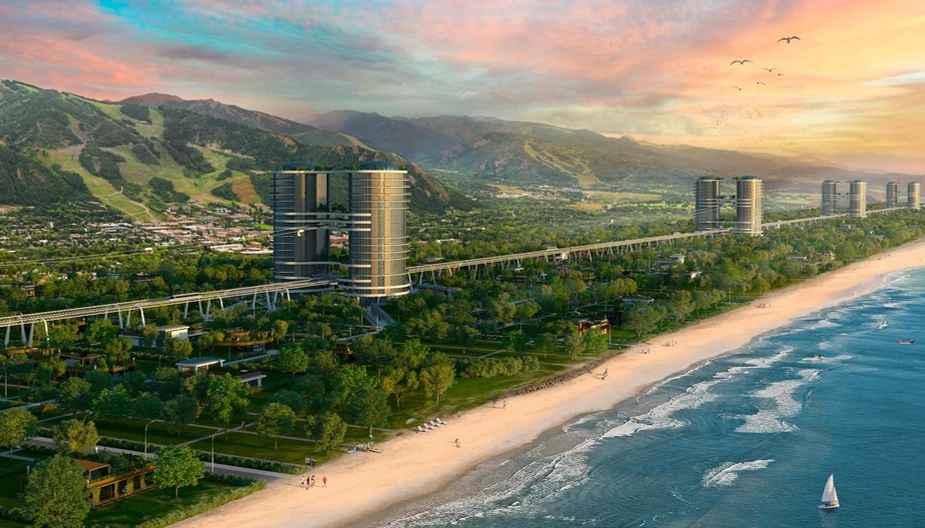The company, which is developing the string transport in the UAE, has presented a Linear City concept. Here is a brief introduction to the special features of settlements of this kind.
What is a Linear City?
The Linear City is a system of cluster settlements that are connected with each other by string transport tracks as well as energy and other engineering and communication channels. Up to 5,000 people can live in one cluster.

How are clusters organised?
In the centre of each cluster, there is a multifunctional dominant building with a string station on the roof. The length of the track between these structures can be up to 1.5 km.

The dominant building also houses apartments, hotels, shops, restaurants, cafés, business centres, museums, theatres, sports and recreational facilities.
There are pedestrian zones with low-rise buildings around the centre, as well as medical facilities, sports fields, schools, kindergartens and shopping centres.

The total area of the cluster is 1-2 km². This size ensures that all the facilities of the settlement are within walking distance and allows to eliminate the need for a private car or traditional public transport.
What is the advantage of an EcoHouse?
The main unit of the residential part of the cluster is the EcoHouse. The building is an autonomous ecosystem that provides residents not only with electricity, heating and cooling, but also with organic food. For this purpose, the roof of the EcoHouse is equipped with a greenhouse where fruit and vegetables can be grown all year round in highly fertile soil.

The Eco House has an area of 300–600m², consists of three floors, and is designed for a family of 3-5 people. Several such structures form a single architectural system, which can be called a horizontal skyscraper — its length varies from 100 m to 1 km.
How does the Linear City contribute to the development of countries?
- The clusters use alternative energy sources, reducing the country's dependence on exhaustible hydrocarbons: natural gas and oil.
The Linear City can unite isolated, sparsely populated and inaccessible areas of the country into a single economy entity with a highly efficient infrastructure.
- In the Linear City, the track structure, power lines and fibre optics are linked together to create a common system for the movement of passengers, freight, electricity and data.
- The construction of Linear Cities contributes to the decentralisation of megacities, the even distribution of the population across the country and the development of new territories: mountains, taiga and the sea shelf.
What makes the Linear City a relevant project?
The construction of the Linear Cities will tackle the major problems of our time: resource scarcity, overcrowding, poor ecology, and ageing housing and transport infrastructure.
The implementation of clusters and the parallel introduction of natural technologies in the industrial and agricultural sectors have the potential to restart any country's economy.
The Linear City model with five active tracks is on display today at the Testing Centre in Sharjah. The mock-up has already been studied by delegations from the Czech Republic, Vietnam, Brazil, Tunisia, Romania, Jordan and other countries.


